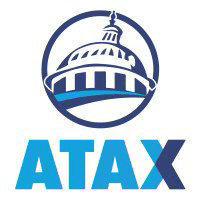Not sure if Commission Express is right for you?
Talk to a Franchise Advisor who can match you with your perfect franchise based on your goals, experience, and investment range.
Talk to an Expert
Commission Express
How much does Commission Express cost?
Initial Investment Range
$107,800 to $299,300
Franchise Fee
$10,000 to $50,000
You will operate a business which purchases accounts receivable from real estate salespeople in the form of pending real estate sales commissions.
Enjoy our partial free risk analysis below
Unlock the full risk analysis to access 9 more categories covering 100+ risks.
Commission Express May 14, 2025 FDD Risk Analysis
Free FDD Library AI Analysis Date: July 16, 2025
DISCLAIMER: Not Legal Advice - For Informational Purposes Only. Consult With Qualified Franchise Professionals.
Franchisor Stability Risks
Start HereDisclosure of Franchisor's Financial Instability
High Risk
Explanation
Commission Express National, Inc. (CEN) explicitly warns of its financial condition. The 2024 audited financial statements in Exhibit E confirm this, showing a stockholders' deficit (negative equity) of ($278,577). Total liabilities substantially exceed total assets. This financial weakness is a significant risk, as it may affect the franchisor's ability to provide support, invest in the brand, and fulfill its obligations. Several state addenda mandate deferral of initial fees due to this condition.
Potential Mitigations
- Your accountant must conduct a thorough review of the franchisor's audited financial statements, including all footnotes and year-over-year trends.
- Discuss the implications of the negative equity and state-mandated fee deferrals with your franchise attorney.
- A business advisor can help you assess if the franchisor's financial state poses an unacceptable risk to your investment.
High Franchisee Turnover
High Risk
Explanation
Item 20 data reveals a high rate of franchisee exits. In 2024, six franchised outlets "Ceased Operations for Other Reasons" out of a starting base of 39, representing a 15.4% churn rate for that category alone. This does not include transfers. Consistently high numbers of outlets ceasing operations over the past three years may indicate potential systemic issues, such as franchisee unprofitability, dissatisfaction, or a challenging business model, which represents a significant risk to your potential success.
Potential Mitigations
- It is critical to contact a significant number of former franchisees listed in Exhibit D to understand their reasons for leaving the system.
- Your accountant should analyze the turnover data in Item 20 for all three years to calculate the total attrition rate.
- Discuss the specific reasons for the high number of units that "Ceased Operations" with a business advisor.
Rapid System Growth
Low Risk
Explanation
This risk was not identified in the FDD package. Item 20 data indicates the franchise system is shrinking or stagnant, not undergoing rapid growth that might strain support services. Rapid growth can be a risk because a franchisor's support infrastructure may not keep pace with the needs of a quickly expanding franchisee base, potentially leading to inadequate training, field support, and other assistance for which you pay royalties.
Potential Mitigations
- A business advisor can help you evaluate whether the system's current size and growth rate align with your investment goals.
- Understanding the franchisor's future growth plans should be part of your discussion with your franchise attorney.
- An accountant can help assess if the franchisor's financial capacity could support future growth if their plans change.
New/Unproven Franchise System
Medium Risk
Explanation
While the franchisor has been in business since 1994, the combination of significant financial instability (negative net worth) and high franchisee turnover disclosed in Items 21 and 20 raises questions about the long-term viability and success of the business model for its franchisees. These factors suggest that despite its age, the system may carry risks similar to an unproven one, as its ability to sustainably support a profitable network appears challenged.
Potential Mitigations
- Your business advisor should help you weigh the franchisor's decades of experience against its current financial and operational challenges.
- A thorough analysis of the financial statements with your accountant is essential to understand the depth of the financial risks.
- Discussing the high turnover rate with former franchisees is critical for your due diligence, and a franchise attorney can help you formulate questions.
Possible Fad Business
Low Risk
Explanation
This risk was not identified. The business of purchasing accounts receivable from real estate sales commissions is a niche but established financial service. It is not dependent on a short-term trend or novelty. The long-term viability of this business is tied to the real estate market cycle rather than a temporary fad, which can provide a more stable, albeit cyclical, demand for your services.
Potential Mitigations
- A discussion with your business advisor can help you understand the long-term trends and cycles in the real estate and financial services industries.
- Your accountant can assist in creating financial models that account for potential fluctuations in the real estate market.
- Seeking legal counsel regarding the regulatory landscape for factoring businesses is advisable for long-term planning.
Inexperienced Management
Low Risk
Explanation
This risk was not identified in the FDD package. Item 2 indicates that the key executive, John L. Stedman, has been with the company since its formation in 1994 and has been involved in the same type of business with an affiliate since 1992. This extensive and long-term experience in both the specific industry and in franchising is a positive factor, suggesting a deep understanding of the business operations.
Potential Mitigations
- It is still wise to discuss the management team's background and strategic vision with a business advisor.
- Your franchise attorney can help you formulate questions for the franchisor regarding their long-term plans for the system.
- Engaging with current franchisees can provide insight into their perception of the management team's effectiveness.
Private Equity Ownership
Low Risk
Explanation
This risk does not appear to be present. Item 1 of the FDD, which details the franchisor and any parent companies, does not indicate that the franchisor is owned by a private equity firm. Ownership by private equity can sometimes introduce risks related to short-term profit motives over the long-term health of the franchise system, so its absence can be a neutral or positive factor.
Potential Mitigations
- Your attorney can help you verify the corporate ownership structure of the franchisor.
- A business advisor can discuss the potential pros and cons of different ownership structures in franchise systems.
- During franchisee interviews, you can inquire if there have been any recent ownership changes or rumors of a sale.
Non-Disclosure of Parent Company
Low Risk
Explanation
This risk was not identified. Item 1 of the FDD clearly states, "We have no parents, predecessors or affiliates required to be disclosed in this Item." This indicates the franchisor entity presented is the top-level entity in the franchise structure, and its financial statements in Item 21 are meant to stand on their own without reliance on an undisclosed parent company.
Potential Mitigations
- Verifying the franchisor's corporate structure and standing with the help of your attorney is a good due diligence step.
- Your accountant's review of the provided financial statements will help confirm if the franchisor appears to be a standalone, sufficiently capitalized entity.
- A business advisor can help you assess the risks and benefits of dealing with a franchisor that is not part of a larger corporate family.
Predecessor History Issues
Low Risk
Explanation
This risk does not appear to be present. Item 1 of the FDD states, "We have no parents, predecessors or affiliates required to be disclosed in this Item." This indicates there is no predecessor history that requires disclosure under franchise law, meaning you are not inheriting potential risks from a prior operator of the system.
Potential Mitigations
- Your franchise attorney can confirm that the disclosures in Item 1 meet legal requirements.
- Asking long-term franchisees about the history of the brand can provide additional context, which your business advisor can help you assess.
- Independent research on the brand's history can sometimes uncover information not required to be in the FDD.
Pattern of Litigation
Low Risk
Explanation
This risk was not identified in the FDD package. Item 3, which requires disclosure of material litigation, states, "No litigation is required to be disclosed in this Item." The absence of a pattern of litigation against the franchisor, particularly claims of fraud or breach of contract from other franchisees, is a positive indicator and reduces a key area of risk.
Potential Mitigations
- Your attorney can conduct independent public record searches to verify the absence of significant litigation.
- A business advisor can help you formulate questions for current and former franchisees about any disputes they may have had.
- It is still prudent to have your attorney review the entire FDD for any terms that could commonly lead to disputes.
Disclosure & Representation Risks
Example Risk: Franchisee Financial Obligations
Blue Risk
Explanation
This risk involves the financial obligations that a franchisee must meet, including initial fees, ongoing royalties, and other required payments. Understanding these obligations is crucial for long-term success.
Potential Mitigations
- Carefully review the Franchise Disclosure Document (FDD) and consult with a franchise attorney to fully understand all financial commitments before signing.
- Conduct regular risk assessments
- Implement monitoring and reporting systems
Unlock Full Risk Analysis
Purchase the complete risk review to see all 102 risks across all 10 categories.
Financial & Fee Risks
Example Risk: Franchisee Financial Obligations
Blue Risk
Explanation
This risk involves the financial obligations that a franchisee must meet, including initial fees, ongoing royalties, and other required payments. Understanding these obligations is crucial for long-term success.
Potential Mitigations
- Carefully review the Franchise Disclosure Document (FDD) and consult with a franchise attorney to fully understand all financial commitments before signing.
- Conduct regular risk assessments
- Implement monitoring and reporting systems
Unlock Full Risk Analysis
Purchase the complete risk review to see all 102 risks across all 10 categories.
Legal & Contract Risks
Example Risk: Franchisee Financial Obligations
Blue Risk
Explanation
This risk involves the financial obligations that a franchisee must meet, including initial fees, ongoing royalties, and other required payments. Understanding these obligations is crucial for long-term success.
Potential Mitigations
- Carefully review the Franchise Disclosure Document (FDD) and consult with a franchise attorney to fully understand all financial commitments before signing.
- Conduct regular risk assessments
- Implement monitoring and reporting systems
Unlock Full Risk Analysis
Purchase the complete risk review to see all 102 risks across all 10 categories.
Territory & Competition Risks
Example Risk: Franchisee Financial Obligations
Blue Risk
Explanation
This risk involves the financial obligations that a franchisee must meet, including initial fees, ongoing royalties, and other required payments. Understanding these obligations is crucial for long-term success.
Potential Mitigations
- Carefully review the Franchise Disclosure Document (FDD) and consult with a franchise attorney to fully understand all financial commitments before signing.
- Conduct regular risk assessments
- Implement monitoring and reporting systems
Unlock Full Risk Analysis
Purchase the complete risk review to see all 102 risks across all 10 categories.
Regulatory & Compliance Risks
Example Risk: Franchisee Financial Obligations
Blue Risk
Explanation
This risk involves the financial obligations that a franchisee must meet, including initial fees, ongoing royalties, and other required payments. Understanding these obligations is crucial for long-term success.
Potential Mitigations
- Carefully review the Franchise Disclosure Document (FDD) and consult with a franchise attorney to fully understand all financial commitments before signing.
- Conduct regular risk assessments
- Implement monitoring and reporting systems
Unlock Full Risk Analysis
Purchase the complete risk review to see all 102 risks across all 10 categories.
Franchisor Support Risks
Example Risk: Franchisee Financial Obligations
Blue Risk
Explanation
This risk involves the financial obligations that a franchisee must meet, including initial fees, ongoing royalties, and other required payments. Understanding these obligations is crucial for long-term success.
Potential Mitigations
- Carefully review the Franchise Disclosure Document (FDD) and consult with a franchise attorney to fully understand all financial commitments before signing.
- Conduct regular risk assessments
- Implement monitoring and reporting systems
Unlock Full Risk Analysis
Purchase the complete risk review to see all 102 risks across all 10 categories.
Operational Control Risks
Example Risk: Franchisee Financial Obligations
Blue Risk
Explanation
This risk involves the financial obligations that a franchisee must meet, including initial fees, ongoing royalties, and other required payments. Understanding these obligations is crucial for long-term success.
Potential Mitigations
- Carefully review the Franchise Disclosure Document (FDD) and consult with a franchise attorney to fully understand all financial commitments before signing.
- Conduct regular risk assessments
- Implement monitoring and reporting systems
Unlock Full Risk Analysis
Purchase the complete risk review to see all 102 risks across all 10 categories.
Term & Exit Risks
Example Risk: Franchisee Financial Obligations
Blue Risk
Explanation
This risk involves the financial obligations that a franchisee must meet, including initial fees, ongoing royalties, and other required payments. Understanding these obligations is crucial for long-term success.
Potential Mitigations
- Carefully review the Franchise Disclosure Document (FDD) and consult with a franchise attorney to fully understand all financial commitments before signing.
- Conduct regular risk assessments
- Implement monitoring and reporting systems
Unlock Full Risk Analysis
Purchase the complete risk review to see all 102 risks across all 10 categories.
Miscellaneous Risks
Example Risk: Franchisee Financial Obligations
Blue Risk
Explanation
This risk involves the financial obligations that a franchisee must meet, including initial fees, ongoing royalties, and other required payments. Understanding these obligations is crucial for long-term success.
Potential Mitigations
- Carefully review the Franchise Disclosure Document (FDD) and consult with a franchise attorney to fully understand all financial commitments before signing.
- Conduct regular risk assessments
- Implement monitoring and reporting systems
Unlock Full Risk Analysis
Purchase the complete risk review to see all 102 risks across all 10 categories.






